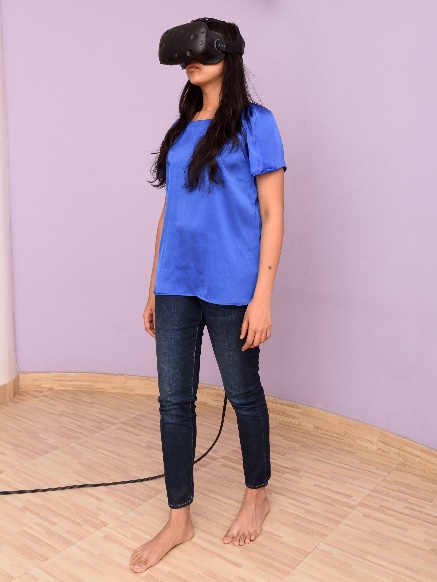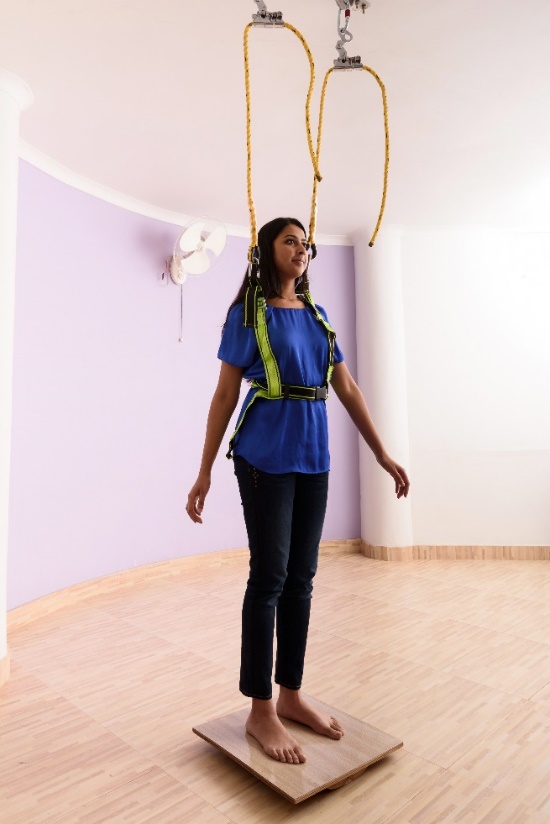All you need to know about vertigo and vestibular rehabilitation therapy
Vertigo, as we all know is a spinning sensation of oneself or the world around. People also refer to this feeling of unsteadiness as dizziness, light headedness or giddiness in general and non-specific terms. The causes and symptoms of vertigo are varied and manifest in different degrees in different people. The medical conditions leading to balance disorders need an accurate diagnosis to provide appropriate treatment.
Most of the vertigo-sufferers come across proper vertigo treatment after living considerable amount of time with their uncertain dizzy spells. Has it been that these people have had a correct diagnosis at the earliest, they could be treated earlier, saving their time, money and life!
Some start feeling dizzy suddenly as a result of traumatic experience, and some experience it as a gradually growing nagging sensation.
Most of the vertigo patients suffer vestibular (inner ear) problems. Some of the vestibular issues are BPPV, Meniere’s disease, vestibular neuritis, labyrinthitis, vestibular paroxysmia. Read here for an in-depth understanding of vertigo, its likely causes, manifestations and treatment.
The vertigo attacks are categorized mainly as a result of any of these following disorders:
- Peripheral or central vestibular disorders. Peripheral vestibular issues arise when the labyrinth in the inner ear is damaged or inflamed. Central vestibular conditions occur when the nerves connecting to brain from the vestibular region are affected.
- Vascular issues relating to a faulty circulatory system in the body.
- Systemic disorders are the condition of the body other than brain and head that cause vertigo.
Diagnosing the Cause of Vertigo
Doctors feel diagnosing vertigo is tricky. But unless the right and timely differential diagnosis are carried out to point out the cause, the treatment cannot yield desired results.
There are neuro-otological, neurological, physiological tests to arrive at the medical condition causing vertigo and its associated symptoms.
Associated Symptoms of Vertigo
- Partial hearing loss
- Palpitation
- Tinnitus
- Nausea
- Vomiting
- Blurred vision or vision loss
- Incoherent speech
- Fainting
- Numbness in any part of the body
- Fatigue
Help Doctors Evaluate Cause of your Vertigo
It is very vital for the doctors to have as much information as possible to arrive at an accurate evaluation. Provide your doc with these details:
- A specific description of dizziness, like when, where and how you felt the dizzy attack
- Share your medical history with the doctor; reports, medications, allergies, any past trauma, surgeries etc.
- Explain the symptoms as clearly as possible. If possible, keep a note tracking what time of the day the and how long the symptoms occurred and any other related information you feel your doctor should know
Depending on the underlying medical condition, treatment for vertigo progresses, with medications, physical manoeuvres, devices or medical procedures.
Vestibular Rehabilitation Therapy
The Vestibular Rehabilitation Therapy is a set of physical man-oeuvres to retrain the brain to adapt to the new situation and develop compensatory pathways through other senses to balance the body. This works by substituting the defunct vestibular region with the nervous system of the brain-stem, cerebellum, visual and somatosensory organs.

The VRT helps treat imbalance, vertigo, visual disturbance and restores the body equilibrium.
The physical therapy is especially helpful in treating symptoms arising from peripheral and central vestibular issues.
The medical studies have confirmed that vestibular rehab program provides long-term and reliable results than medications. At the same time, the studies also opine that medication can be prescribed to combat severely discomforting symptoms such as nausea, vomiting, motion sickness etc.
VRT enables the vertigo patients to quickly return to healthy life and go about with their daily activities. The imbalance almost always paralyses the person’s everyday life and social interactions, owing to sudden disequilibrium triggered by noise, motion, or light.
There are 3 primary therapies to restore vestibular induced imbalance
- Habituation
- Gaze stabilization
- Balance training
Medical Conditions and Advantages of VRT
- People suffering from BPPV conditions can see improvement as shortly as a single session of canalith repositioning exercises. For the secondary symptoms such as balance or visual issues, vestibular rehab exercises are carried out.
- Central vestibular issues such as a vestibular migraine may take a longer time to cure vertigo and its symptoms completely, however, the ease sets in quite quickly in a couple of sessions.
- One-sided vestibular issues such as vestibular neuritis or labyrinthitis induced dizziness see useful results with VRT sessions.
- VRT sessions help improve balance and dynamic visual acuity in bilateral vestibular issues.
- The VRT is very valuable in treating visually triggered vertigo.

It is essential that the rehabilitation program is tailored to the patient’s medical need rather than put her on standard therapy. After a thorough assessment of medical condition and symptoms of vertigo, the vestibular rehabilitation program can be customized to suit the patient’s medical challenges and health history. This holistic approach to vertigo treatment ensures lasting relief from vertigo.
The therapists at NeuroEquilibrium’s Advanced Vertigo and Balance Clinics can be approached for thorough clinical evaluation of the cause of vertigo and undergoing customized vestibular rehabilitation therapy for a quick return to healthy living.
Related Post: